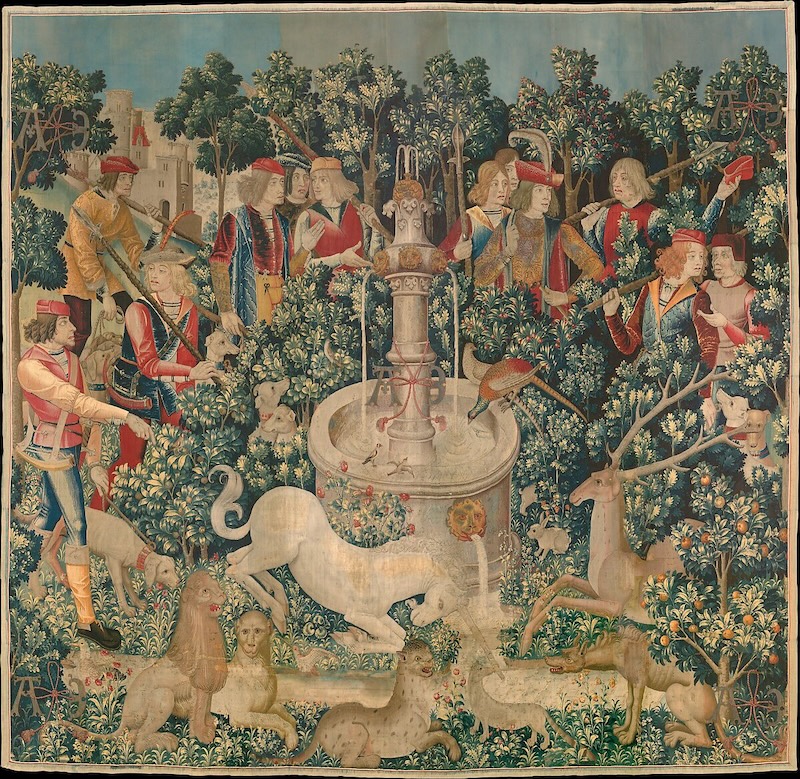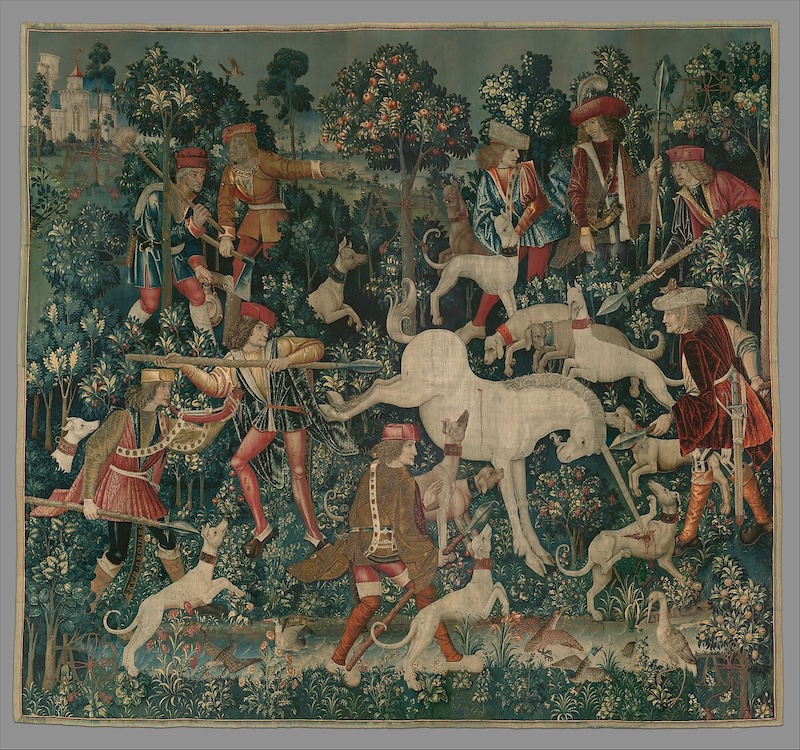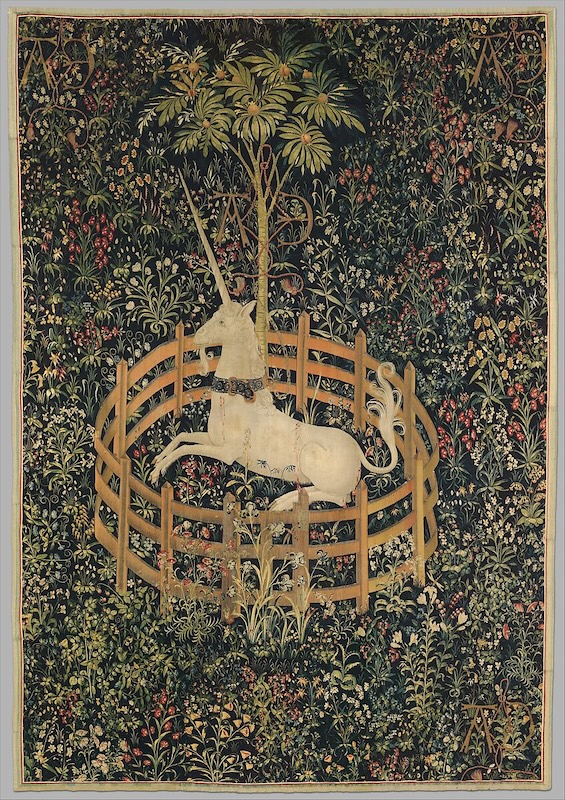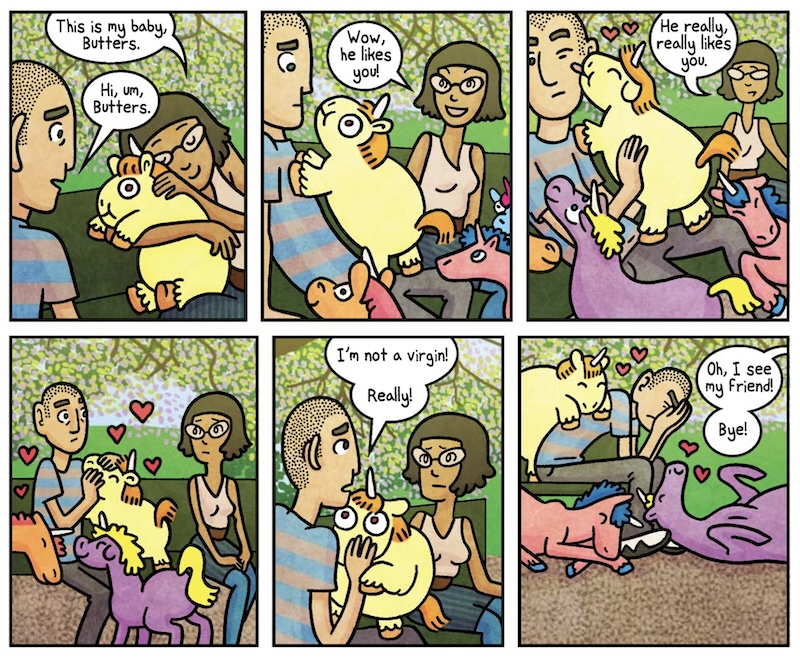So there is a strange, violent, bloody, incredibly funny movie out this spring called Death of a Unicorn starring Paul Rudd, Jenna Ortega, Téa Leoni, and Richard E. Grant. Dear Wife and I saw it Thursday evening at The World Theatre, our local non-profit, volunteer-run community movie theatre.(Playing also Friday night and Sunday afternoon – Full disclosure, I’m a regular volunteer there.)
On our way home from this oddball film, it occurred to me that I had already known quite a bit of its backstory from an article I thought I had read in the New Yorker maybe 10 years ago that might have been written by science and thriller writer Douglas Preston.
I was sorta close – It was almost exactly 20 years ago and the article was written by Doug’s brother, Richard Preston. Capturing the Unicorn tells the story of a collection of seven tapestries known as “The Hunt for the Unicorn” that hang in the Cloisters annex of the New York Metropolitan Museum of Art. They were created for unknown purposes in approximately 1500, most likely in Brussels or Liège, and are commonly considered to be both the greatest tapestries of all time and some of the greatest art of the Middle Ages.
There are a host of theories about why they were made and by whom. A night guard at the Cloisters spent a lifetime of work observing the tapestries and attempting to derive the meaning from them. Art historians question the guard’s unconventional interpretations of them, but then again they haven’t spent decades living in direct proximity of them, either. JSTOR Daily discusses much of the imagery in these multicolored hangings enhanced with sliver and gold thread, but I will leave it to you, Dear Reader, to investigate.
Here are images of three of them from the Met’s web site:

The Unicorn Purifies Water – from the Unicorn Tapestries at The Met. Click on image for more information.

The Unicorn Defends Himself – from the Unicorn Tapestries at The Met. Click on image for more information.

The Unicorn Rests in the Garden – from the Unicorn Tapestries at The Met. Click on image for more information.
These tapestries have inspired a great deal of modern storytelling about unicorns, including animation in the opening sequence of the film The Last Unicorn.
They also showed up as inspiration for the art in my favorite graphic novel, Darwin Carmichael is Going to Hell, by Sophie Goldstein and Jenn Jordan. The scene below is taken from a sequence about Darwin visiting a unicorn park in New York City.

Scene from the graphic novel Darwin Carmichael is Going to Hell, by Sophie Goldstein and Jenn Jordan. For those who are wondering, Yes, Butter’s the Unicorn is a shout-out to Kate Beaton’s Fat Pony.
SPOILER ALERT – From here on out we will be discussing plot points from the movie Death of a Unicorn.
So after those digressions, let’s get back to the subject at hand.
Death of a Unicorn starts with the premise that these tapestries were something more than art, something more than guidance to young French aristocrats, something more than art designed to torment art curators centuries after their creation. Suppose that they portrayed a previous time when unicorns and humans really interacted with each other, where unicorns had magical powers and loved virgins who were pure of heart.
Suppose then also that these unicorns were hiding out in the present day in the mountains of British Columbia and that their blood was a cure for all that ailed humans….
That’s the story writer/director Alex Scharfman tells in his horror/comedy film from the trendy A24 studio (which brought us both Everything, Everywhere, All At Once and The Brutalist). The film is full of standard movie tropes – the evil pharmaceutical exec; his self-absorbed, selfish family; the neglectful father and his disaffected daughter; and monstrous unicorns. Ok, that last part is not such a standard trope.
I went down the rabbit hole this morning digging into the story of the tapestries because I wondered how accurately the movie told the story of the tapestries – both about where they came from and what story the fabrics themselves told. Aside from the idea that the tapestries were telling a true story, the one bit of fictional speculation in the movie was where missing sections (in real life) from the tapestries were replaced by segments depicting more extreme unicorn violence. The rest stays fairly close to the story told within the tapestries.
Death of a Unicorn is undoubtedly violent and silly. It’s also an enjoyable, fun movie if you like your horror with a good dose of art history.
